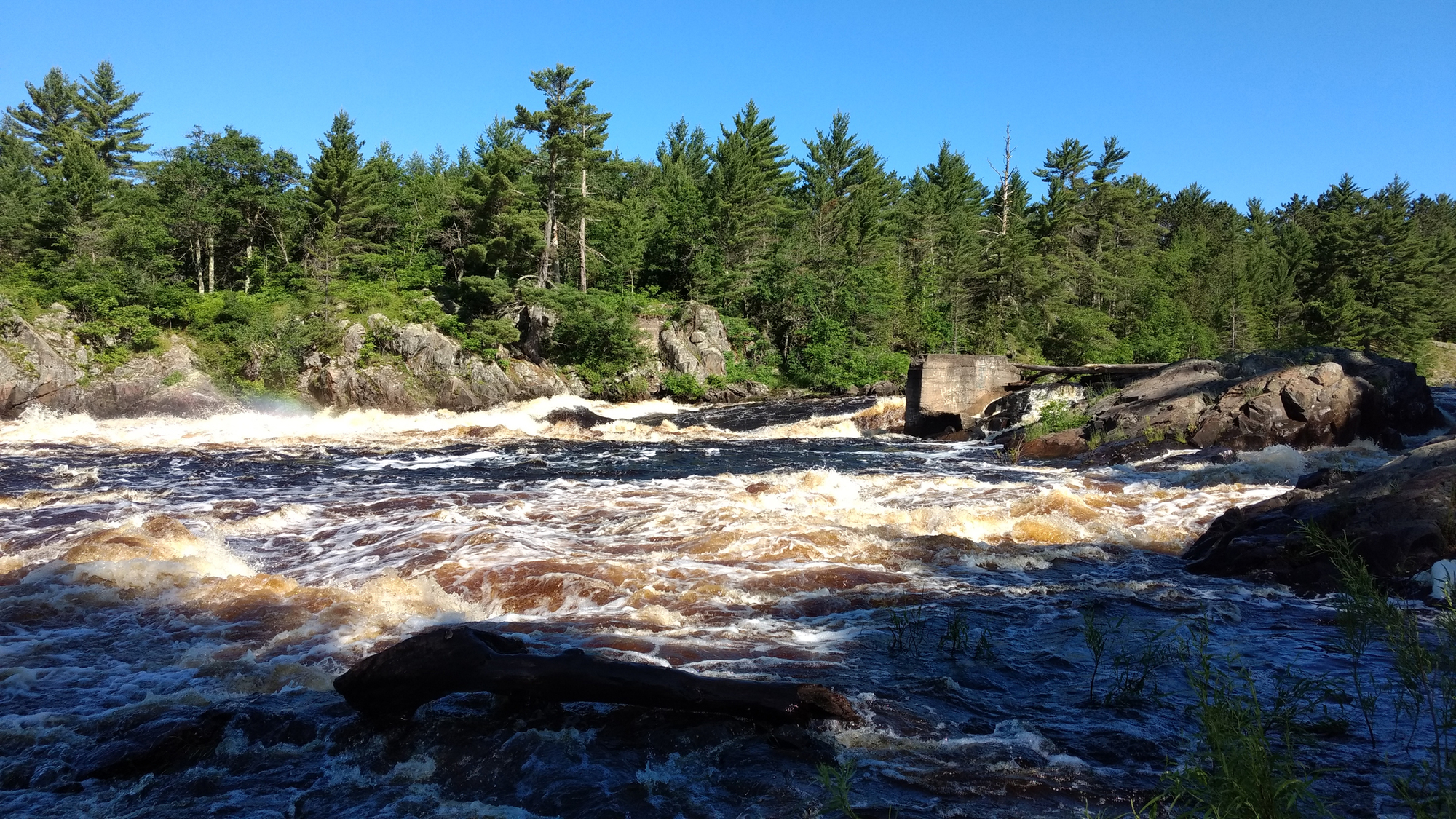|
June 23, 2017
Contact: John Pepin, 906-226-1352
DNR Conservation Officers urge U.P. waterway user safety
Menominee River, others running high, increasing dangers
With summer officially underway, Michigan Department of Natural Resources Conservation Officers know swimmers, boaters, anglers and others will begin flocking in large numbers to the state’s waterways looking for fun in the sun.
However, recent prolonged rainfall in the Upper Peninsula over the past few weeks has left several rivers and creeks higher than usual for this time of year. Officers are urging extra caution when heading to these waterways.
“The inherent dangers posed by water bodies is heightened dramatically when river water levels are high,” said Lt. Pete Wright, a district law supervisor with the DNR in Marquette. “Currents are stronger, new drop-offs can be carved into sandy stream bottoms, deep holes are much deeper and there is greater likelihood of encountering floating obstructions.”
The National Weather Service office in Green Bay, Wisconsin issued a flood advisory Tuesday for the Menominee River near Kingsford and the Big Quinnesec Falls Dam in Dickinson County.
The river was flowing at a rate of 5,749 cubic feet per second Tuesday morning. At flows of 8,000 cubic feet per second downstream from the Kingsford dam some shoreline structures may be impacted, according to the advisory.
The flood advisory, which was later lifted, affected Dickinson and Menominee counties in the Upper Peninsula and Florence and Marinette counties in northeastern Wisconsin.
Menominee River tragedy
The strong currents of the Menominee River proved deadly in a recent incident — not the first for the waterway that makes up many miles of the Michigan-Wisconsin border.
On June 13, Bryan Christopher Stanchina, 17, of Norway, drowned in the Twin Falls area of the Menominee River after he was swept away by a swift current while trying
to assist another swimmer, the Iron Mountain Daily News reported.
Stanchina’s body was recovered in about 14 feet of water on the Wisconsin side of the river near a private access road to the Twin Falls power dam, police said.
“The teen’s death illustrates the concerns of parents and other loved ones for those frequenting the beaches and rivers this summer,” said John Pepin, DNR deputy public information officer. “We all need to take precautions to remain safe.”
Boating and alcohol
In 2016, 38 people died in recreational boating accidents in Michigan, the largest number in nearly two decades. While boating fatalities nationally hit a five-year high, the Great Lakes State ranked fourth among the country’s states and territories.
The U.S. Coast Guard said alcohol use is the leading known contributing factor in fatal boating accidents. Where the primary cause was known, alcohol was listed as the leading factor in 15 percent of deaths.
Alcohol was a contributing factor in one recreational boating death in Michigan during 2012 and 2013. That figure climbed to four each in 2014 and 2015, before jumping to seven deaths with alcohol a factor in 2016.
Operation Dry Water
Michigan Conservation Officers will participate in the national under the influence awareness and enforcement campaign, Operation Dry Water — a heightened enforcement effort to curb impaired boating and driving June 30 through July 2.
“We will be working alongside other law enforcement officers to help reduce impaired boating across Michigan and the country,” Wright said. “This is a year-long effort with a heightened enforcement campaign just ahead of the July 4 holiday.”
For more information on the effort, visit www.operationdrywater.org/
Accident statistics
Nationwide in 2016, lakes, ponds, reservoirs, dams and gravel pits were the scenes of 2,017 accidents, 1,360 injuries and 351 deaths last year. Rivers, streams, creeks and bayous accounted for 993 accidents, 189 deaths and 645 injuries.
June and July were the most hazardous and deadliest months of 2016 with 111 and 143 deaths, respectively. There were 728 accidents and 440 injuries across the country in June and 1,081 accidents and 764 injuries in July.
Coast Guard recreational boating accident statistics for the U.S. released in May offered numerous interesting details. Among them:
- The number of vessels registered dropped by 0.04 percent from 2015
- At the same time, the number of boating accidents increased 7.3 percent over 2015. The number of deaths increased 12 percent and the number of injuries was up 11.1 percent.
- Eight out of every 10 boaters who drowned were using vessels less than 21 feet in length.
- Where the cause of death was known, 80 percent of fatal boating accident victims drowned.
Conservation Officers are hoping education efforts resulting in heightened waterway user awareness, coupled with enforcement action where appropriate, will help reduce hazards on the water across the state.
Resources
To find out more about water levels of Upper Peninsula rivers and lakes, check out information provided to the National Weather Service by the U.S. Geological Service at https://water.weather.gov/ahps2/index.php?wfo=MQT.
For the Great Lakes marine hazard outlook, visit www.weather.gov/mqt/Local_Marine.
Get more information on boating, fishing, water trails and other great recreation opportunities at the DNR’s website at www.mi.gov/dnr.
Michigan conservation officers are fully commissioned state peace officers who provide natural resources protection, ensure recreational safety and protect citizens by providing general law enforcement duties and lifesaving operations in the communities they serve.
See more on Michigan conservation officers at www.michigan.gov/conservationofficers.
/Note to editors: Accompanying photos are available below for download. Suggested captions follow. Credit: Michigan Department of Natural Resources.
River: The Menominee River was photographed flowing at a high rate this week in the southwestern Upper Peninsula in Dickinson County./
The Michigan Department of Natural Resources is committed to the conservation, protection, management, use and enjoyment of the state’s natural and cultural resources for current and future generations. For more information, go to www.michigan.gov/dnr.
|







